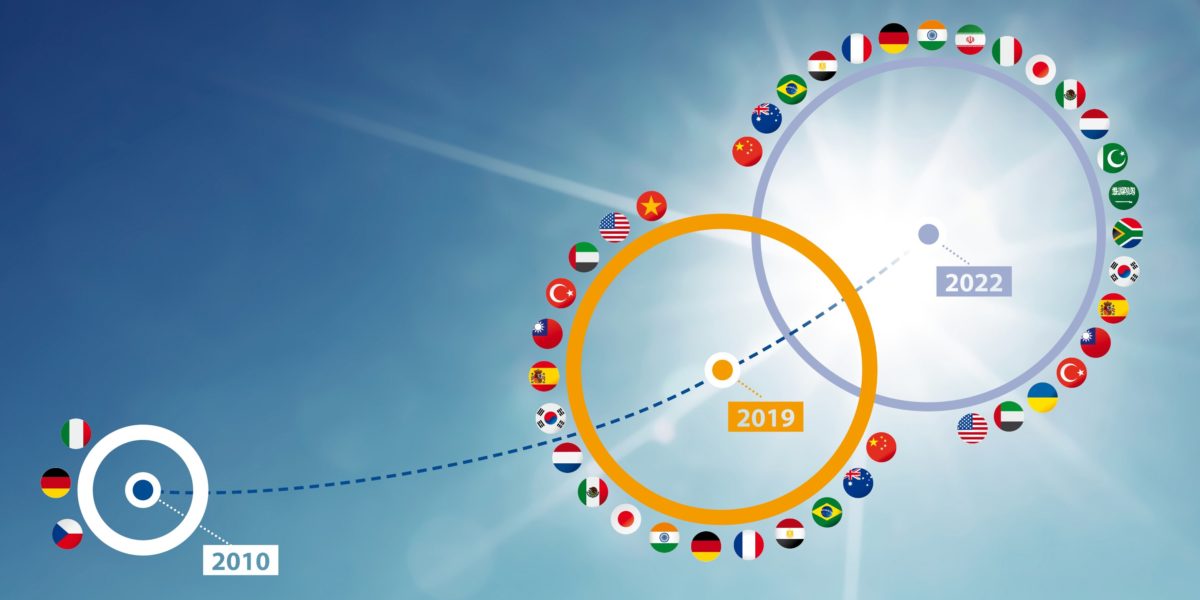Greece’s solar PV market has left the stagnation of recent years behind to enter a new era of PV development, led by renewable energy auctions. PV technology was the first to succeed under the auctions policy, with a 40 MW pilot tender in 2016. As of July 2018, the country had embarked on regular auctions for both solar and wind power. Greece tends to auction PV and wind power capacity in separate pots, but it has also implemented a joint tender mechanism.
According to the country’s updated auctions plan, Greece aims to tender 430 MW and 300 MW of PV capacity in 2019 and 2020, respectively. Capacity will be allocated in PV technology pots for projects with a capacity of between 500 kW and 20 MW. The same plan also envisages blended PV and wind tenders next year for larger projects,with up to 500 MW of capacity potentially on offer to investors. It also leaves room for an extra mixed PV and wind tender in 2019, specifically for the island of Evia.
All things considered, Greece’s tenders have been a success. One roadblock is a requirement that bidding projects hold a generation license and grid-connection agreement. Few projects currently meet that criteria. This hurdle is complemented by a separate competition rule that demands tenders be oversubscribed by at least 40%. As a result, Greece’s tenders award less capacity than initially envisaged, although the remaining capacity is rolled over. There is frantic license activity currently in Greece that sees both international and local investors applying to gather the necessary licenses, giving them entry to the tenders. According to data from Greece’s energy regulator, over 6 GW of new PV projects have applied in the last 18 months to be granted generation licenses.
Cyprus, on the other hand, is by default a very small market due to its limited size. Its remuneration for the most recent round of subsidy-free PV projects, however, was rather lavish.
The Cypriot government has selected a total of 86 projects, ranging between 100 kW and 8 MW, and totaling around 120 MW, to be built in the country without feed-in-tariff remuneration. Instead, the selected projects will only be paid the variable, so-called “avoidance cost,” which equals the amount of money that Cyprus saves by not paying its fossil fuel power fleet. This cost is currently €0.12/kWh, although in the past it has dipped down to €0.046/kWh. Investors who can afford the variable nature of the new remuneration will certainly be rewarded.
This content is protected by copyright and may not be reused. If you want to cooperate with us and would like to reuse some of our content, please contact: editors@pv-magazine.com.



By submitting this form you agree to pv magazine using your data for the purposes of publishing your comment.
Your personal data will only be disclosed or otherwise transmitted to third parties for the purposes of spam filtering or if this is necessary for technical maintenance of the website. Any other transfer to third parties will not take place unless this is justified on the basis of applicable data protection regulations or if pv magazine is legally obliged to do so.
You may revoke this consent at any time with effect for the future, in which case your personal data will be deleted immediately. Otherwise, your data will be deleted if pv magazine has processed your request or the purpose of data storage is fulfilled.
Further information on data privacy can be found in our Data Protection Policy.